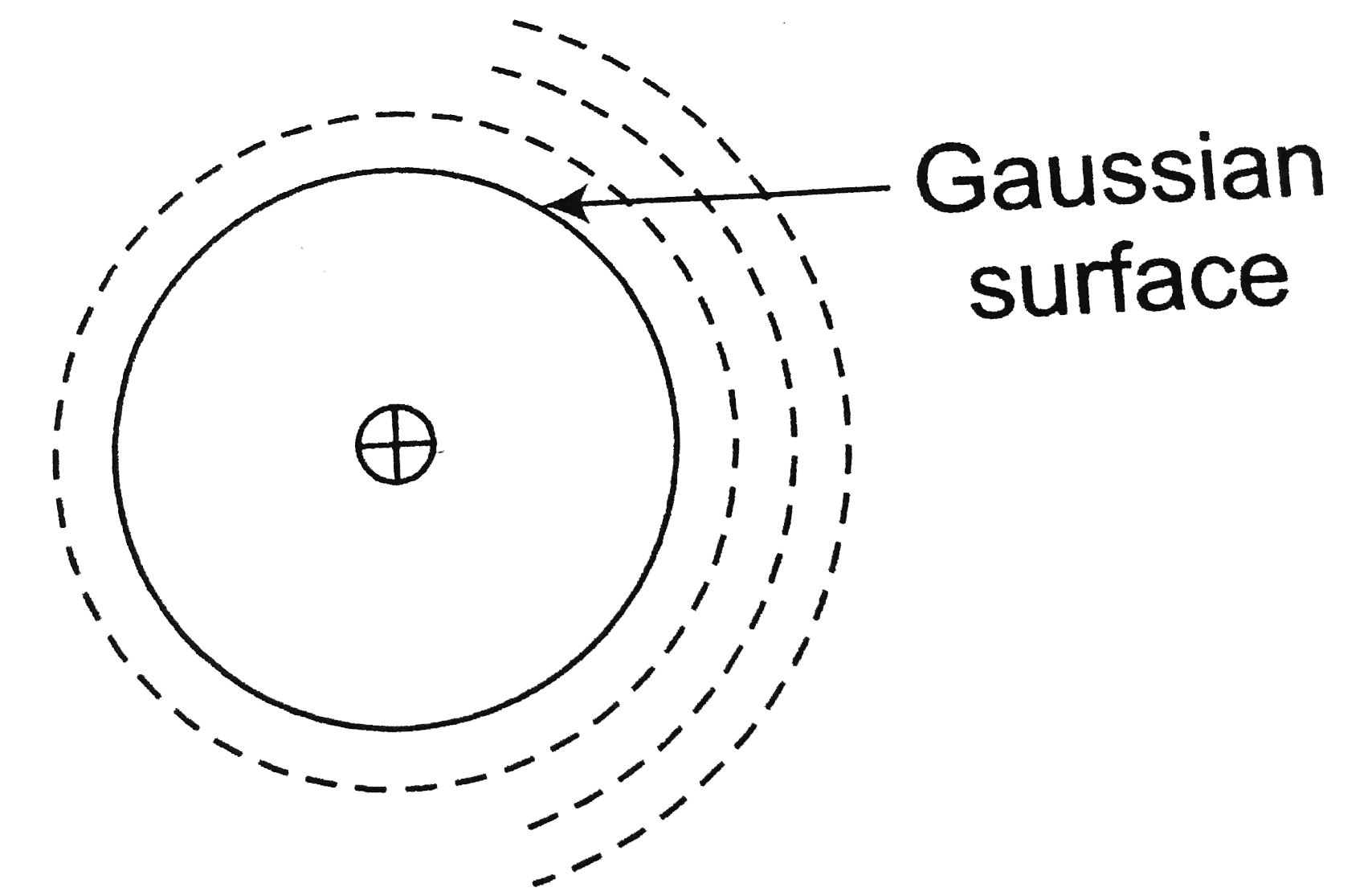A+q1 charge is at centre of an imaginary spherical Gaussion surface 'S', and −q1 charge is placed nearby this +q1 charge inside 'S'. A charge +q2 is located outside this Gaussian surface. Then electric field on Gaussian surface will be :
due to −q1 & q1
uniform
due to all charges
zero
The correct Answer is:C
Step by step video, text & image solution for A+q_(1) charge is at centre of an imaginary spherical Gaussion surface 'S', and -q_(1) charge is placed nearby this +q_(1) charge inside 'S'. A charge +q_(2) is located outside this Gaussian surface. Then electric field on Gaussian surface will be : by Physics experts to help you in doubts & scoring excellent marks in Class 12 exams.
Topper's Solved these Questions
- BOOK - MOTIONCHAPTER - ELECTROSTATICS-IIEXERCISE - Exercise - 2 (Level - I) Section B - Properties of conductors9videos
ELECTROSTATICS-II
- BOOK - MOTIONCHAPTER - ELECTROSTATICS-IIEXERCISE - Exercise - 2 (Level - I) Section C - Spheres Problem, Electrostatics pressure12videos
ELECTROSTATICS-II
- BOOK - MOTIONCHAPTER - ELECTROSTATICS-IIEXERCISE - Exercise 1 (Section D - Plates)2videos
ELECTROSTATICS-II
- BOOK - MOTIONCHAPTER - ELECTROSTATICS - I EXERCISE - EXERCISE - 4 (Level -II) PREVIOUS YEAR - JEE ADVANCED13videos
ELECTROSTATICS - I
- BOOK - MOTIONCHAPTER - ERRORS , THEORY EXERCISE - EXERCISE 4 (LEVEL -II)10videos
ERRORS , THEORY
Similar Questions
Can charge lie on a Gaussian surface?
View SolutionA charge Q is enclosed by a spherical Gaussian surface of radius R. If the radius of the sphere is double, how will the outward electric flux charge ? If a charge −Q is brought outside the Gaussian surface, will the electric flux reduce to zero ?
View Solution
Knowledge Check
- Question 1 - Select One
A closed surface is vacumm encloses charges −qand+3q. Another charge −2q lies outside the surface. Total electric flux over the surface is
AzeroB2q/∈0C−3q∈0D4π/∈0 - Question 2 - Select One
Gauss's law and Coulomb's law , although expressed in different forms , are equivalent ways of describing the relation between charge and electric field in static conditions . Gauss's law is ε0ϕ=qencl,when q(encl) is the net charge inside an imaginary closed surface called Gaussian surface. The two equations hold only when the net charge is in vaccum or air .
If the charge q3 and q4 are displaced (always remaining outside the Gaussian surface), then consider the following two statements :
A: Electric field at each point on the Gaussian surface will remain same .
B: The value of ∮→E.d→A for the Gaussian surface will remain same.ABoth A and B are true .BBoth A and B are false.CA is true , but b is false.DB is true , but A is false. - Question 3 - Select One
A charge q is enclosed by an imaginary Gaussian surface.

If radius of surface is increasing at a rate drdt=K, thenAflux linked with surface is increasing at a rate dϕdt=KBflux linked with surface is decreasing at a rate dϕdt=−KCflux linked with surface is decreasing at a rate dϕdt=1KDflux linked with surface is qε0
A charge q is placed at the centre of an imaginary spherical surface. What will be the electric flux due to this charge through any half of the sphere.
View SolutionA charge Q is placed at the centre of a cub. Find the flux of the electric field through the six surfaced of the cube.
View SolutionA charge of 8.85C is placed at the centre of a spherical Gaussian surface of radius 5cm .The electric flux through the surface ..
View SolutionA point charges + Q is placed in the vicinity of a conducting surface Draw. The electric field lines between the surface and the charges.
View SolutionA point charge +Q is placed in the vicinity of a conducting surface. Draw the eletric field lines between the surface and the charge
View Solution
